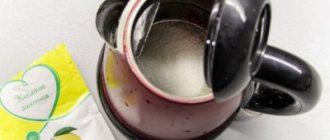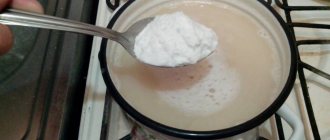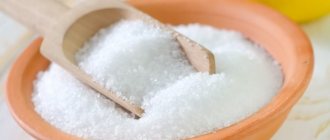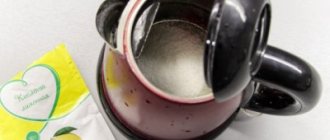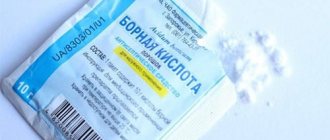The canning process is not complete without the use of acetic acid. It gives the piquant taste that most of us like so much, and also prevents the growth of pathogenic bacteria that can ruin the entire product. Today, housewives can no longer imagine how to do without this simple, but such an important component. What about those who cannot drink vinegar for health reasons? Is it really necessary to completely abandon homemade preparations? No! Citric acid can be used instead of vinegar. We'll look at the proportions in today's article.
How is citric acid harmful to the body?
Increased dosage of citric acid
can damage tooth enamel and contribute to the appearance of caries... If it gets into the eyes, such a solution will cause severe burning of the eye mucosa and skin irritation. It should be remembered that overdoing is not justified. Moderation is good in everything!
Interesting materials:
In what document is serfdom legally formalized? In which document viewing mode are headers and footers displayed? What legal document establishes the general responsibilities of military personnel? Adobe illustrator how to change color? How to restore hair color? What happens if you mix orange and blue? What happens if you mix blue and purple? What happens if you mix green and yellow? What happens if you mix yellow and red? What goes with Burgundy?
Clean product
If we take 100% acid, it is a very interesting product. When cooled to 17 degrees, it becomes not just icy, but crystallizes. This amazing phenomenon cannot be observed at home, because it is not sold in this form in the store. In home cooking we do not encounter such a substance. Typically a 70% acid solution is required. But most often housewives deal with an aqueous solution called table vinegar. Its concentration ranges from 3 to 13%, and this is quite enough for preparing most dishes. You can use citric acid instead of vinegar. Let's look at the proportions a little lower. In the meantime, let's decide what manipulations need to be done with the essence to get a product of the required concentration.
Fish processing and necessary ingredients
Before you bake fish, you should buy the right product. What you need to pay attention to when choosing a carcass:
- The scales should be shiny and undamaged.
- The eyes of fresh fish, even frozen ones, are transparent without clouding.
- The gills should have any shade of red, without any admixture of gray.
- The smell of fish should be calm, not sharp.
Further steps are to properly prepare the carcass:
- Before baking, you need to remove the scales from the skin.
- The abdomen should be opened, all the insides should be pulled out, and also cleared of dark films, if any.
- Using culinary scissors, cut out the gills, trim the fins and tail feathers.
Many chefs advise dry marinating it for 15-20 minutes before placing the fish in the oven. To do this, you need to mix coarse salt, pepper and spices and coat all the fish, including the inside, with the resulting composition, avoiding any gaps.
If the carcass is large, then it is permissible to make vertical cuts along the entire body. Very large specimens should be cut into pieces.
For canning and salads
You can safely use citric acid instead of vinegar. Proportions for preservation are taken based on the characteristics of the recipe and the products used. For example, 0.5 liters of tomato juice requires only 1 g of citric acid. It can be diluted directly in a teaspoon and poured into the juice at the right time. It is best to find an adapted recipe, but you are also allowed to experiment on your own. To do this, we present the following proportions.
Bonus: three more methods from cosmetology
When creating cosmetics, citric acid is used quite often, but some useful cosmetic procedures can be easily done with the most ordinary powder from the store.
1. Chemical peeling for the face
Citric acid can be used to unclog pores and brighten skin. A solution of acid (“lemon” plus water in a 1:1 ratio) must be applied to clean facial skin, left for 1–2 minutes, then rinsed with plenty of water and applied nourishing cream. The procedure is not recommended in summer and on sunny days.
Other lemon substitutes
Citric acid is not the only substitute for lemon. If you don’t have either one or the other at hand, you can successfully use:
- sour berries (red currants, lingonberries, cranberries);
- sorrel;
- oranges and tangerines;
- pomegranate, cherry, cranberry, apple, grape juice without sugar;
- table, apple or wine vinegar;
- lemon pepper (when cooking fish).
Natural substitutes are rich in bioactive substances and are beneficial for health. Most often, instead of lemon in cooking, 9% table vinegar is used: 4 teaspoons replace the juice of 1 lemon or 1 teaspoon of lemon juice.
So, can you replace lemon with citric acid? In cooking, definitely yes. Both components add sourness, make meat and fish juicy, and prevent sweet creams and jam from crystallizing. When replacing, be guided by the above proportions and taste the solution to get the desired percentage of acidity.
What amount of citric acid in grams is required to replace one lemon?
How much water is needed to dilute citric acid?
How to measure citric acid in grams with a teaspoon?
Approximately the recipe calls for one lemon, that is, if I dilute 1/4 teaspoon of citric acid in 100 grams of water, is that normal or too much?
When solving the problem of replacing a living lemon with citric acid, which sometimes has to be done, we must take into account that lemons are different in size, that they have different skin thicknesses (that is, the contents themselves may be a little more for thin-skinned lemons and a little less for lemons with thick peel), according to the degree of ripeness, which means that lemons also vary in acidity. Therefore, you can speak on average or specify the characteristics of these citrus fruits.
We also know that lemons contain citric, malic and ascorbic acids. But the specific gravity of their totality in different lemons again varies - from four to eight percent. These numbers are cited in many sources.
Therefore, we will calculate on average.
But even here we will encounter discrepancies in the data. For example, there is such a scheme for replacing lemon with citric acid:
Another source gives the following information on the same replacement (more on that here):
This means that instead of lemon you can take from six to ten grams of citric acid. So on average it turns out like this:
6 + 10 = 16 : 2 = 8.
We again reach a value of eight grams of crystalline citric acid in one teaspoon.
It should still be diluted with water
And try to see if you get “lemon juice”.
But tea spoons are also different, with different capacities). In general, you see, everything is conditional, everything is approximately. And each housewife has already gained her own experience on how to replace lemons and how to dilute citric acid with water.
Lemon is a very popular fruit, used not only for culinary purposes, but also in medicine and cosmetology. But it is not always at hand. Therefore, we will tell you how to replace lemon juice.
Lemon juice can be replaced with citric acid. Moreover, it is always at hand, does not deteriorate, does not erode, and it is easier to obtain the desired concentration from it. For example:
If the original product is an essence
Standardly in the store it has a concentration of 70%. We will focus on this indicator. Before you figure out the proportions of citric acid instead of vinegar, you need to understand what is considered such.
- If you need a 3% solution, then take 1 teaspoon of essence, dilute it with 23 teaspoons of water. This procedure can be done in advance. To do this, take an empty bottle and pour the prepared solution into it. Now it will be safely stored in the closet.
- A 4% solution is made by mixing one spoon of essence and 17 spoons of water.
- 5% — 1/13.
- 6% — 1/11.
- 9% — 1/7.
Each of these solutions can be transformed into a weaker one by adding water.
Popular recipes
You can bake in foil with lemon in different ways. If you plan to cook the side dish separately, then salt, pepper and lemon are enough. But you can prepare a full-fledged dish right away, without wasting time on complex manipulations.
Salmon steak with zucchini
This recipe is remarkable because in this way you can prepare a full dinner for one or a large group. It will take no more than half an hour. Products for one serving you will need:
- salmon steak,
- half a young zucchini
- a couple of thin slices of lemon,
- salt pepper.
Form a square of food foil, 2.5 times the size of the steak. The foil should be positioned with the mirror side up. It is better to lay out the material in two layers.
Step by step recipe:
- Mix coarse salt and ground pepper, coat the steak with the mixture, making sure there are no gaps, and leave for 10 minutes in a warm place.
- Grease the center of the foil with a thin layer of butter.
- Cut the zucchini into rings. Place on foil and lightly add salt.
- Place the marinated steak on top of the vegetables.
- Place lemon slices into the belly hole.
- Close the foil, forming a seam at the top.
- Place the basket with fish and vegetables in an oven preheated to 1800C and cook for 15 minutes.
- Remove the fish from the oven, open the foil and place back for another 5 minutes.
If you are using young zucchini in the preparation, the vegetable should first be boiled until half cooked.
If desired, you can add bell peppers, tomatoes and herbs to the fish before baking, or you can simply cut fresh ones and serve as an additional side dish, lightly sprinkling them with lemon juice.
Festive bream
This dish will look great at a gala family dinner, and the taste of juicy bream will not leave anyone indifferent.
To prepare you will need:
- medium-sized bream carcass, approximately 1.3 kg,
- one lemon,
- salt, pepper, herbs - to taste.
Denis Borisov
Assistant chef of the restaurant "Fisherman's House"
Ask a Question
First, the fish should be scaled, gills removed and gutted. The fins should be trimmed with culinary scissors.
Procedure:
- Rinse the fish well under running water and dry with paper towels.
- Wipe the abdominal cavity well with napkins to remove dark films.
- It is necessary to make vertical cuts along the entire carcass on both sides at a distance of 3–4 cm from each other.
- Mix salt and pepper, thoroughly coat the fish with the mixture inside and out.
- Cut the lemon in half, cut one half into thin slices, and squeeze the juice from the second.
- Insert lemon slices into the slits.
- Sprinkle the juice on both sides of the fish. Cut the squeezed half and put it into the belly along with the selected greens.
Line a baking sheet with foil in two layers, grease with vegetable oil. Place the fish on a baking sheet, cover the top with foil, and seal the seams.
Place in an oven preheated to 1800C and bake for about 40 minutes. If desired, at the end you can remove the top layer of foil and lightly brown the fish.
a brief description of
Citric acid is added to food to regulate acidity. During preservation, the product serves as protection against the spread of microorganisms that may appear in the jar during the fermentation process and cause harm to the body.
How and from what are they made?
Initially, citric acid was made from the unripe fruits of the lemon tree. The additive can be obtained from the juice of not fully ripened lemons, citrus plants, Chinese lemongrass, berries, as well as from coniferous tree species.
On an industrial scale, a food additive is made by complex synthesis of sugary substances (or simple sugar) with a strain of mold.
What does it look like?
The additive is a snow-white powder with dense crystals that dissolve well in liquid. Sold in sealed packages of various sizes.
Taste
The product has a pronounced sour taste, similar to concentrated lemon juice.
Smell
Citric acid has a subtle sour aroma that can only be detected when you first open the package. After this, the smell of the food additive is practically not felt.
Table vinegar (9%) can be replaced with apple cider vinegar.
But you need to understand that apple cider vinegar is sold at 5%, that is, to use it instead of 9% vinegar, you will need 2 times more apple cider vinegar. Instead of 1 tablespoon of 9% vinegar, take 2 tablespoons of apple cider vinegar.
Apple cider vinegar, grape (wine), rice vinegar, balsamic vinegar and others are most often used NOT for canning, but for dishes (borscht, salads, dressings) or marinating meat and fish. Since they still have their own specific taste, introduce them into your family’s diet carefully, because as you know, we are often conservative in our tastes, especially children.
You need to be even more careful if someone in the family has gastritis, ulcers or colitis, as well as
How to dilute dry powder
What to do if the recipe specifies essence? You can use the following memo and use it to perform not too complicated calculations. The ratio of essence and table vinegar with citric acid is considered. Dry crystals need to be diluted with plain water. In order to obtain a 70% essence substitute, you will need to dilute a tablespoon of acid in two tablespoons of water. This solution must be taken in accordance with the recipe, how much essence is indicated. For example, a teaspoon.
- if you add one citric acid to 14 parts of water, you will get a solution equal to 9% table vinegar;
- for an analogue of 6% you will need to take 1/22;
- 5% vinegar is obtained by mixing 1 part citric acid and 26 parts water;
- 4% - dilute 1 to 34;
- 3% - 1 in 46.
Now you know how much citric acid instead of vinegar will be needed to prepare the desired solution. What’s remarkable is that no special conditions are needed. Just a clean bottle, water and lemon powder, which is available in any store. In terms of cost, such a solution will be even cheaper than vinegar.
Choosing fish to cook in foil with lemon
There are fish that are ideal for cooking in the oven. A distinctive feature of these types is the density of protein in the fillet. These include:
- salmon,
- hake,
- bream,
- mackerel,
- halibut.
The size of home kitchen appliances imposes its own limitations. The whole fish will fit in the oven, weighing no more than three kilograms. If the carcass is larger, the fish is prepared in portioned pieces.
It is not advisable to cook fish with loose and watery fillets in the oven:
- pollock,
- cod,
- whiting,
- catfish
If you still decide to cook this baked fish with lemon in the oven, you should use food foil to keep the juice inside the dish.
For roasting a whole carcass, you should choose only fresh fish. If you buy a frozen product, it is better to cook it in portions.
We weigh without scales
It’s hard to even imagine how many industries in the food industry use citric acid instead of vinegar. The proportions per liter are approximately ½ teaspoon - this is a universal formula that can be used in most recipes. By the way, if you take a level teaspoon, it will be 5 grams of citric acid. The product is widely used; sauces cannot be made without it. This is an essential component of cold drinks. The confectionery industry is also nowhere without it. Lemon is often added as a preservative to increase the shelf life of products. In particular, it is added to some canned foods. It is simply impossible to find an equally simple and safe acidifier in cooking. Plus, it doesn't have as strong a taste as vinegar. Sometimes you can use pure lemon juice. However, this is an option that is ideal for salads and not for canning. Citric acid is not only safer than vinegar, but is also beneficial for the body in moderation.
Recipes for winter lecho with lemon
As a rule, every housewife prepares lecho for the winter. A very tasty appetizer consists of tomatoes and sweet bell peppers. Most often acetic acid is added to it. However, we offer a recipe for using lemon crystals instead of acetic acid.
Ingredients
- 200 g onion;
- 0.5 tbsp. oils;
- 2.5 kg pepper;
- 2 kg of tomatoes;
- 5 g citrus analogue;
- 1.5 tablespoons of salt;
- 0.3 tbsp. Sahara.
How to cook:
- Thinly slice the onion.
- Cut the pepper into half rings, 0.5 centimeters wide.
- Mix with onion and place in a saucepan.
- Peel the tomatoes and grind through a meat grinder.
- Pour the mixture into pepper, salt, add sugar and vegetable oil.
- Place on the fire and simmer for 20 minutes, skimming off the foam.
- Measure out the lemon acid and add two tablespoons of hot water.
- After the crystals dissolve, pour into lecho.
- Let simmer for another five minutes.
- Immediately pour into prepared jars, roll up the lids, turn over, then wrap.
Dear readers, the topic of how to replace vinegar with citric acid is more relevant today than ever. If you have never tried it, then preserve a few jars to try. You might like this replacement.
Read further:
How can you use citric acid at home?
Benefits of homemade apple cider vinegar and how to use it
What is the right thing to eat for breakfast and what can you replace oatmeal with?
Recipes for chatterers with salicylic acid for acne
Mandatory fertilizing of plants with boric acid
How to water indoor flowers with succinic acid: recipes and tips
When performing sugaring
Not everyone has the opportunity to visit beauty salons. Therefore, many women strive to do all kinds of procedures at home. And he was no exception. Sugaring is a method of depilation (250 grams of granulated sugar is boiled over high heat with the addition of 2 tablespoons of lemon juice until golden brown, then depilation is done with a cooled paste). It would seem that everything ingenious is simple, but not everyone can apply products with lemon juice to their body due to skin sensitivity. Dermatologists recommend that such people replace lemon juice with citric acid when performing sugaring. The main thing is to maintain the ratio of ingredients.


